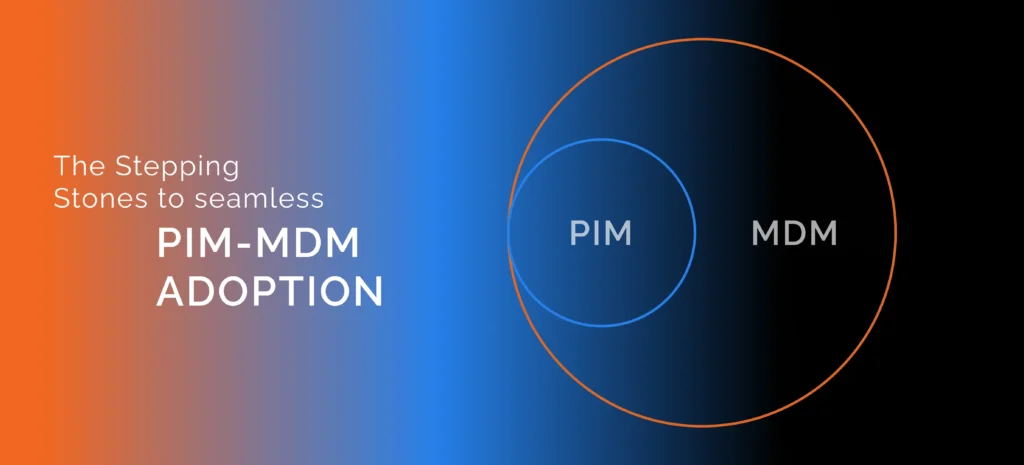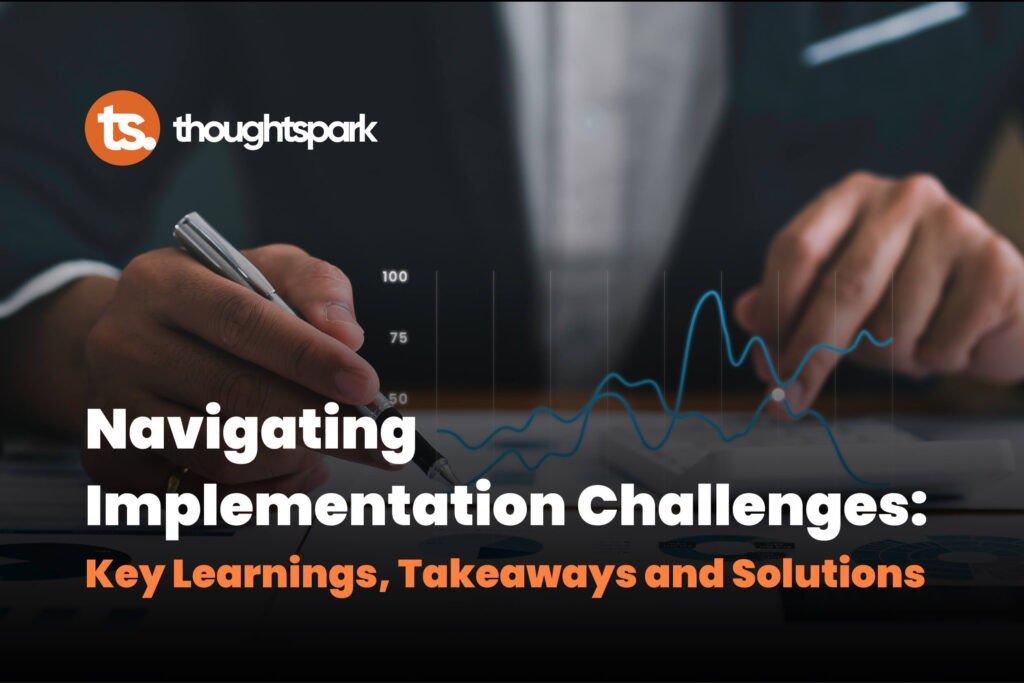
Digital transformation has become critical for organizations striving to maintain a competitive edge. According to a recent Gartner report, 91% of businesses are involved in some or the other form of digital initiative, underscoring the widespread adoption of new technologies. For companies looking to stay ahead, integrating Master Data Management (MDM) systems into traditional workflows can streamline operations, enhance data quality, and drive strategic growth. However, adopting these technologies often encounters resistance from within the organization. This blog aims to provide strategic insights to overcome such resistance seamlessly and successfully implement MDM in their established workflows.
Understanding Resistance to Change
Resistance to change is a natural human reaction. Especially in established organizations with deeply rooted workflows, employees may fear the unknown, worry about job security, or feel overwhelmed by the perceived complexity of new systems. Additionally, cultural factors such as a strong attachment to existing processes and a reluctance to disrupt the status quo play significant roles. Understanding these factors is crucial for executives aiming to mitigate resistance and foster a more receptive environment for change.
The Strategic Value of Master Data Management
Master Data Management (MDM) is more than just a technological upgrade; it’s a shift towards data-driven growth, and a strategic enabler for business transformation. It ensures the consistency, accuracy, and reliability of key data across the organization, vital for informed decision-making.
Here’s how MDM can drive strategic value:
- Improved Data Accuracy and Consistency: It gets rid of data silos and makes sure that all departments have access to the same, accurate information. This leads to better coordination and more reliable analytics.
- Enhanced Decision-Making Capabilities: With high-quality data, executives can make more informed decisions that match with the organization’s strategic goals. Accurate data supports risk management and helps identify new opportunities.
- Better Customer Experiences: Accurate and consistent product information, often managed through integrated Product Information Management (PIM) systems within MDM, enhances customer satisfaction by providing reliable data across all customer touchpoints.
- Regulatory Compliance: Maintaining accurate and up-to-date data helps organizations meet regulatory requirements. This is in particular important in industries with stringent compliance standards.
Successful implementation of MDM has transformed organizations by providing a single source of truth for data, leading to increased efficiency and better strategic outcomes.
Strategies for Overcoming Resistance
Implementing MDM requires a well-thought-out strategy to address and mitigate resistance. Here are some key strategies:
1. Engaging Stakeholders
Engaging stakeholders early and effectively is one of the most critical steps in overcoming resistance. Executive sponsorship and leadership are pivotal in driving change. Here are some strategies for engaging stakeholders:
- Identify Key Stakeholders: Understand who will be most affected by the MDM implementation and involve them from the outset. This includes department heads, IT leaders, and data stewards.
- Build a Compelling Business Case: Clearly articulate the benefits of MDM, like improved data quality, operational efficiency, and enhanced decision-making. Highlight how these benefits align with the organization’s strategic objectives.
- Communicate the Vision: Share a clear and compelling vision of the future state with MDM. Use storytelling to illustrate how MDM will transform workflows and contribute to the organization’s success.
Engaging stakeholders helps build a sense of ownership and commitment to the change process, making it easier to overcome resistance.
2. Communication and Transparency
Effective communication is paramount when implementing new systems. A transparent approach helps build trust and reduces uncertainty. Consider the following:
- Regular Updates: Provide frequent updates on the progress of the MDM implementation. Highlight milestones and address any challenges openly.
- Two-Way Communication: Encourage feedback from employees at all levels. Create channels for questions, concerns, and suggestions to be heard and addressed.
- Highlight Quick Wins: Early successes can build momentum and demonstrate the tangible benefits of MDM. Share these wins to reinforce the positive impact of the change.
Establishing a change communication plan can also ensure that all stakeholders are kept in the loop. This plan should outline what information will be communicated, by whom, and how often.
3. Training and Support
Comprehensive training and support are essential to ease the transition to new systems. Investing in these areas can significantly reduce resistance:
- Tailored Training Programs: Create training programs specific to different organizational roles. Ensure that employees understand how MDM will affect their daily tasks and workflows.
- Ongoing Support: Provide continuous support through helpdesks, online resources, and regular refresher courses. Make sure employees feel supported throughout the transition.
- Change Champions: Identify and empower change champions who can advocate for the new system and assist their peers with the transition.
Moreover, various training methods, such as hands-on workshops, e-learning modules, and one-on-one coaching, should be considered to cater to different learning styles.
4. Aligning with Business Goals
Aligning MDM adoption with the organization’s broader strategic goals is crucial for securing buy-in from all levels of the organization. Here’s how to do it:
- Strategic Integration: Demonstrate how MDM supports the organization’s strategic objectives, such as improving operational efficiency, enhancing customer experience, and driving innovation.
- Future Growth Initiatives: Highlight how MDM can facilitate future growth initiatives by providing reliable data that supports strategic planning and decision-making.
- Examples of Success: Share case studies or examples of other organizations that have successfully integrated MDM and achieved significant business benefits.
In addition, mapping out how MDM can solve current business pain points can help stakeholders see the new system’s immediate value and relevance.
5. Measuring success
To ensure the successful adoption of MDM, it’s important to measure progress and outcomes. Here’s how to approach this:
- Key Performance Indicators (KPIs): Define KPIs that align with the strategic goals of the MDM implementation. These might include data accuracy rates, time savings, and improvements in decision-making quality.
- Continuous Improvement: Data and feedback are used to continuously improve the MDM system. Performance is reviewed against KPIs regularly, and adjustments are made as needed.
- Celebrate Milestones: Recognise and celebrate significant milestones in the MDM implementation process. This helps maintain enthusiasm and reinforces the new system’s value.
Furthermore, regular surveys and feedback sessions should be considered to gather insights into how the MDM system is performing and where further improvements can be made.
Conclusion
Adopting Master Data Management in traditional workflows is a strategic move that can result in significant business benefits. However, overcoming resistance to change is a critical aspect of this journey. Executives can lead their organizations through a successful transition by understanding the reasons behind resistance, engaging stakeholders, maintaining transparent communication, providing comprehensive training and support, aligning MDM with business goals, and measuring success. Embracing MDM enhances data quality and operational efficiency and positions the organization for sustained growth and competitive advantage in the digital age.







